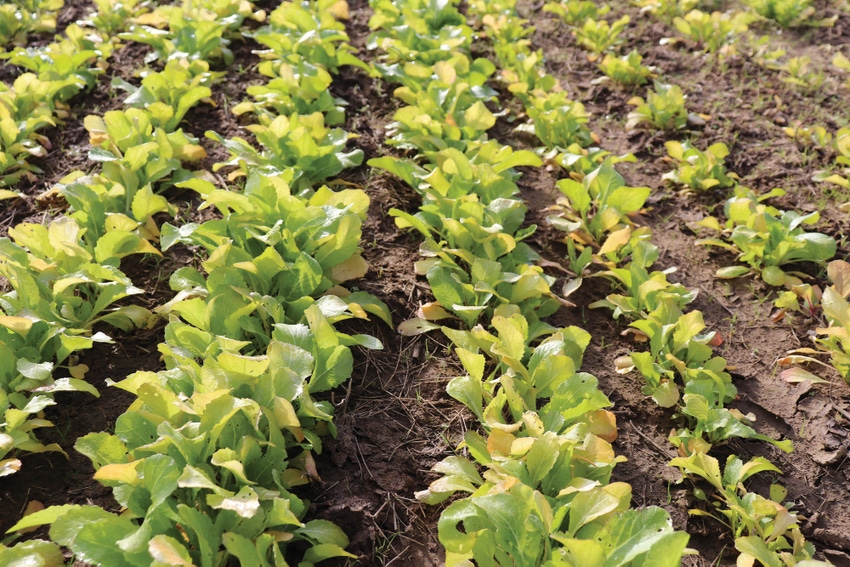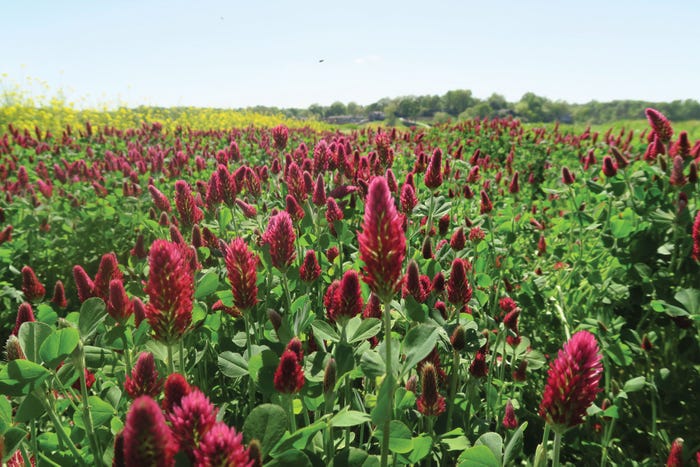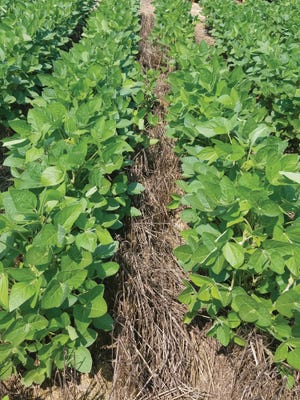
Farmers understand the benefits of improving or maintaining soil health, and most have adopted at least some conservation practices over the last few decades.
Potential for improvements remain, however, says Virginia Sykes, assistant professor, Department of Plant Sciences, University of Tennessee Institute of Agriculture, Knoxville.
“In addition to reduced soil erosion, conservation offers other benefits, including financial advantages,” Sykes says.
Cover crops, for instance, provide nitrogen to the system, reduce herbicide expense and sequester carbon. “We also see improvements in soil structure over longer periods of time,” she says. “And soil moisture management improves with increased water-holding capacity and infiltration.”
Sykes says cover crops and reduced tillage provide the foundation for a comprehensive conservation program. “No-till makes the biggest difference among all the things we are doing to conserve resources,” she says. Cover crops also contribute but have not been incorporated into row crop operations as much as reduced tillage.
Tennessee farmers have embraced conservation tillage. A 2017 USDA survey shows close to 56% of Tennessee row crop acreage is in a conservation tillage system, with 51% of that attributed to no-till. “Closer to 75% to 85% of Tennessee’s major crops acreage (corn, soybean, cotton) is in no-till.
“Tennessee farmers have done a good job switching over and the state is a leader in no-till. The Milan No-Till Field Day had a role in that,” she says. “Extension and NRCS (Natural Resources Conservation Service) programs also support these efforts.”
She contends that adopting conservation tillage practices aided Tennessee’s contribution to the state’s agricultural economy.
Sykes says the definition of no-till may vary from person to person. “Two of our Tennessee studies are represented in a continent-wide Soil Health Institute study of long-term crop rotation and cover crop systems. In a recent meeting, study leaders discussed challenges in categorizing site management, given inconsistencies in how different people define conservation tillage. It varies. One person may describe no-till as tilling every third year instead of every year. Every third year is an improvement, but it’s not what I would consider no-till.”
Cover crop adoption
Sykes says cover crops have not been as widely adopted as reduced tillage but offer increased benefits coupled with no-till.
The combination, she says, improves moisture retention, soil health, weed control and nutrient management. Maintaining vegetation on the ground year-round provides cover to protect soil from wind and rain erosion. The root system provides fissures to move water into the soil profile. Cover shades out weed species, and some mixes add nitrogen to the soil.
Sykes says picking the right cover crop mix makes a difference. Most mixes include cereals, legumes and brassicas.

She says each species and each variety within the species offers different benefits. “Look at how each species contributes to improve soil health,” she says.
“All provide some advantage in erosion control by providing a cover on the soil. Legumes also contribute nitrogen, some more than others.
“Cereals aid weed suppression. They break down slowly and are a good choice for late planting, providing cover that other species might not.
“Brassicas (turnips and radishes) sometimes get a bad name for not providing significant biomass in the spring. We want lots of spring biomass to suppress weeds, but brassicas are useful for other reasons. They provide cover in the fall and the root structure helps break up soil when producers are not tilling; brassicas help reduce soil compaction.”
In the mix
The cover crop mix makes a difference. “Producers can get into trouble with the wrong mix,” Sykes says. “Plant mixes heavy on cereals, especially with cereal rye, may be completely dominated by cereals at termination. This can reduce nitrogen contribution or even cause a nitrogen deficit early in the cash crop season.”
She says some producers may not estimate accurately how much nitrogen they get from a cover crop. She recommends a University of Georgia nitrogen calculator to determine how much nitrogen a field is getting from the cover crop. (See http://aesl.ces.uga.edu/mineralization.) “That program helps determine how much nitrogen the cover crop is either contributing or tying up, so the correct amount can be applied to optimize the cash crop yield.”
She says farmers can take a sample themselves to determine biomass and send that material to the Tennessee Soil Plant Pest Center to analyze for forage constituents, which can then be input into the nitrogen calculator. “The calculator gives the total amount of nitrogen and how it would release. It is a useful tool. Producers shouldn’t assume they will get nitrogen just because they have a cover crop.”
Start small
Sykes says some farmers express concerns about losing productivity while initiating a cover crop system.
“It can be tricky because we see a lot of variability in results. Cover crops come with a lot of variables — when to plant, when to terminate, which crop systems we integrate, what cover crop species to plant, what varieties within the species are best. All those factors make cover crop adoption a bit tricky.”
Sykes recommends doing some homework before going full bore into cover crops. “Talk to people who know about your specific region. Check with Extension and NRCS to help figure out how to implement the system and to maximize the benefits. Start small in the beginning; don’t plant the entire farm but start with a few acres and grow from there.”
She says producers will need little specialized equipment.
“Mostly, what they have for no-till row crops will work with cover crops. Some high-residue cover crops may need different equipment, such as planter attachments, to cut through the heavy cover crop residue.
“It’s important to get the cash crop seeded on time,” Sykes says. “That’s the end goal.”
Rotation still important
She also cautions that adding a cover crop does not diminish the need to rotate cash crops. “Even with cover crops, we still need to rotate.”

Cover crop residue persisting in soybean crop in mid-July. (Photo by Virginia Sykes)
She says research shows cash crop yields improve with rotation. “Use cover crops in addition to, instead of in place of, rotation.
“During a growing season, cover crops might break up some cycles (weed, insect and disease) but not everything. Cover crops plus rotation offer a different set of microbes. This is an area of increasing interest — trying to understand the microbiome, the communities of microorganisms in the soil and how these influence cash crops and soil health.”
Other advantages
Sykes says the primary benefits cover crops provide concern long-term improvement to soil health. Producers may also see financial advantages from reduced nutrient costs and fewer herbicide applications. But some might also realize cash value from the cover crops.
“Grazing offers a huge potential,” Sykes says. “So far, we see no significant negative impact from grazing cover crops in the winter. These are mostly forage crops. We might not get as much nitrogen or weed suppression, but we do get erosion control and some nutrient contribution from the livestock, along with the value of the forage.”
Cattle prices will be a factor in profit potential.
“Other dual-use cover crop options we are just starting to look into include planting winter oil seeds as cover crops for spring harvest. Currently, we are looking at several species for Tennessee, including camelina, canola, carinata and pennycress.”
Resource conservation makes environmental and economic sense, Sykes says. Improving soil health is an investment in the farm’s future.
About the Author(s)
You May Also Like






